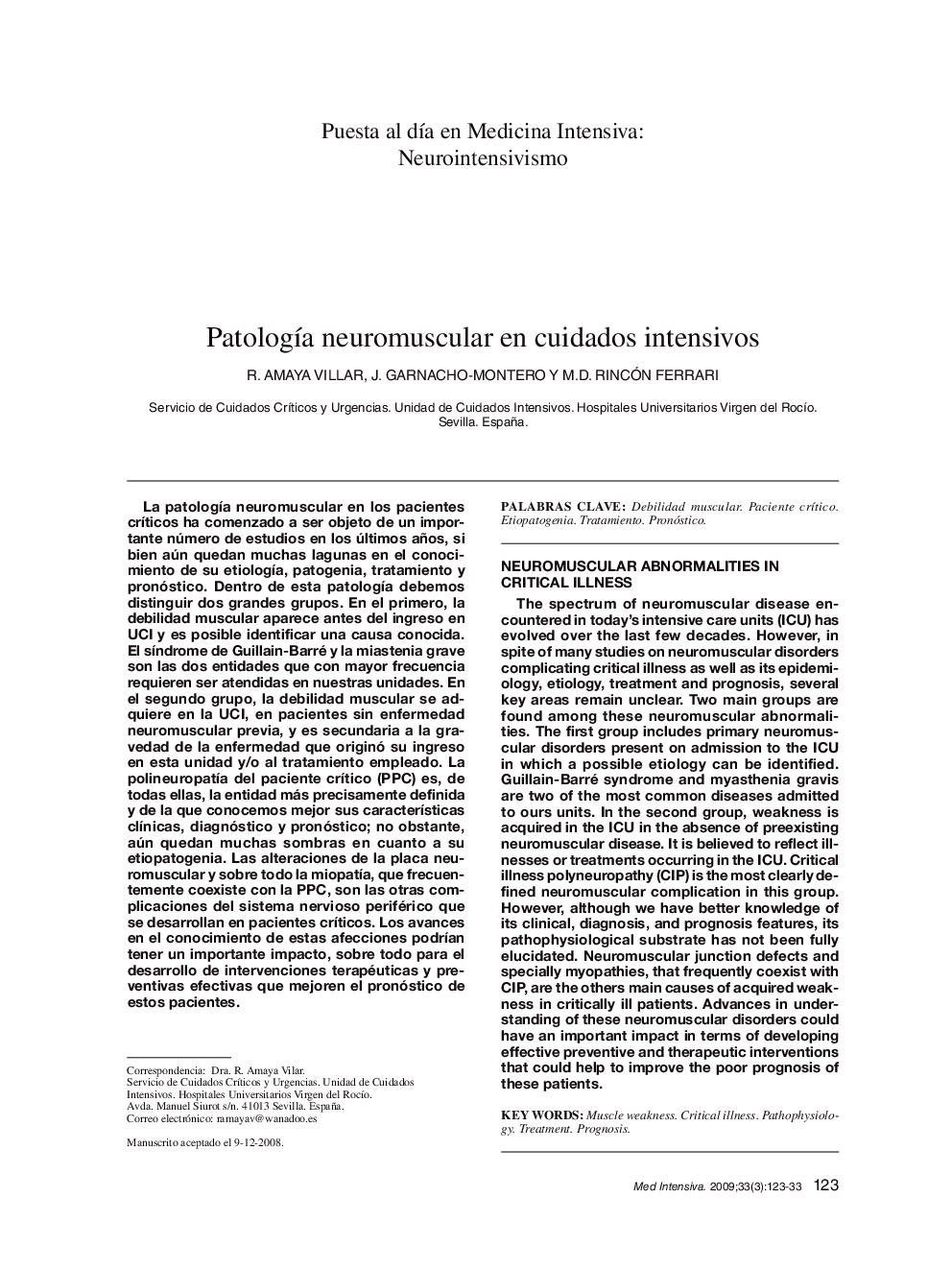| Article ID | Journal | Published Year | Pages | File Type |
|---|---|---|---|---|
| 3113379 | Medicina Intensiva | 2009 | 11 Pages |
Abstract
The spectrum of neuromuscular disease encountered in today's intensive care units (ICU) has evolved over the last few decades. However, in spite of many studies on neuromuscular disorders complicating critical illness as well as its epidemiology, etiology, treatment and prognosis, several key areas remain unclear. Two main groups are found among these neuromuscular abnormalities. The first group includes primary neuromuscular disorders present on admission to the ICU in which a possible etiology can be identified. Guillain-Barré syndrome and myasthenia gravis are two of the most common diseases admitted to ours units. In the second group, weakness is acquired in the ICU in the absence of preexisting neuromuscular disease. It is believed to reflect illnesses or treatments occurring in the ICU. Critical illness polyneuropathy (CIP) is the most clearly defined neuromuscular complication in this group. However, although we have better knowledge of its clinical, diagnosis, and prognosis features, its pathophysiological substrate has not been fully elucidated. Neuromuscular junction defects and specially myopathies, that frequently coexist with CIP, are the others main causes of acquired weakness in critically ill patients. Advances in understanding of these neuromuscular disorders could have an important impact in terms of developing effective preventive and therapeutic interventions that could help to improve the poor prognosis of these patients.
Keywords
Related Topics
Health Sciences
Medicine and Dentistry
Critical Care and Intensive Care Medicine
Authors
R. Amaya Villar, J. Garnacho-Montero, M.D. Rincón Ferrari,
